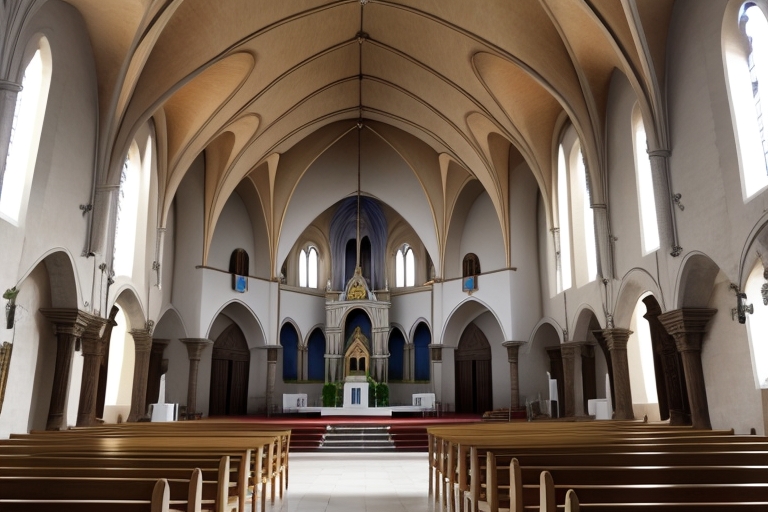The pulsating rhythms and socially-conscious lyrics of Haitian music have long captivated global audiences.
From legends like Tabou Combo to today’s hitmakers, Haiti has birthed some of the Caribbean’s most vibrant musical talent.
One artist carrying on this rich legacy is singer, songwriter, and guitarist Dener Ceide. With his blend of electrifying Compas grooves, African and Caribbean flavors, and raw lyricism, Ceide has become a leading voice of Haiti’s new generation.
Yet his rise has humble origins. In this extensive profile, we retrace Ceide’s lifelong musical journey, from learning the tambour as a child to fronting the iconic band Tabou Combo and launching his own movement called Zafem.
Through rare interview snippets and song analysis, we uncover how Ceide’s upbringing, values, and vision have shaped him into an artist fighting oppression through the power of rhythm.
Discovering Music in Church Choirs
Ceide’s immersion in music began early on in Saint-Louis du Sud, a sleepy coastal town in southern Haiti where he was born.
His mother served as the choir director for their local Catholic church, Notre Dame Alta Grâce.

Ceide fondly remembers attending his mother’s choir practices and being enthralled by the blend of vocals:
“I was exposed to rehearsals. These kinds of things framed me. They framed me and gave me a taste. The taste of colors, sounds, sound textures. I was fascinated by the sounds.”
This exposure to the chemistry of choral singing first instilled Ceide’s fascination with the colors and textures of music. The seed was planted for a future in the arts.
Learning Hand Drumming and Folk Rhythms
In his early childhood, Ceide became infatuated with the complex rhythms of Haitian drumming. In the evenings, he would hear ritual drum circles beating out traditional rhythms, known as rara, in nearby villages:
“It fascinated me to hear the echo of the drums. And these rhythms were like… it was not the usual thing to hear. But when you hear this…? It resonated something in me.”
Raptured by the mystical drumming, Ceide learned hand percussion on instruments like the Haitian mamba and tchatcha. Little did he know this was his first step on the path to musical mastery.
Picking Up the Guitar and Finding His Calling
When Ceide was about 10 years old, he attended a music camp where a guitarist and singer performed. This was a bolt of lightning for the young Ceide:
“I felt something. I said, it’s me. It’s the day I said, okay, I’m going to do that. I didn’t know how I was going to do it. But I knew I was going to do it.”
After this epiphany, Ceide found a local teacher, famous guitarist Linné Edouard, for a few lessons. He then continued learning guitar on his own, driven by an all-consuming passion.
Ceide knew in his heart that music was his calling. While still just a child, he began a quest to soak up diverse influences from blues to jazz and discover his unique voice.
Jamming with Local Bands as a Teenager
In his teens, Ceide started gigging around Port-Au-Prince Haiti with various local bands. He credits this experience for helping refine his guitar skills:
“I played in neighborhood groups in my churches. This allowed Ceide to hone his guitar skills in his formative years as a musician.”
Some of these early bands included the church worship group Alabanza and his neighborhood local band Manchetta. During this era, Ceide also became politically conscious and dreamt of how he could use music to uplift communities.
Immigrating to Miami and Leveling Up His Chops
In 2000, a 20-year-old Ceide immigrated to Miami, FL, joining the thousands of Haitian expats in the city. He enrolled in musical studies at Miami Dade College for 3 years.
Ceide believes this formal training was integral in teaching him music theory, composition skills, and ensemble dynamics:
“I wanted to understand harmony a little more. I also wanted to understand composition and performance. Because at school, you know there are ear trainings. I was really into it, I wanted to understand that.”
At school, Ceide connected with diverse musicians spanning Latin music, gospel, jazz, and other global genres. These collaborations expanded his musical horizons exponentially.
Joining Legendary Haitian Band Tabou Combo
With sharpened musical abilities, Ceide began gigging professionally in Miami’s vibrant music scene.
But in 2008, he got the opportunity of a lifetime – joining the iconic Haitian band Tabou Combo as their guitarist.
Tabou Combo was Ceide’s dream band growing up, so getting to tour the world and record albums with them until 2013 was monumental. He reflects:
“It enabled him to tour globally, record albums, and become fluent in Haiti’s native Compas style.”
Tabou Combo’s flashy Compas sound, blending Haitian folk rhythms with funk and horns, profoundly shaped Ceide as he reached musical maturity.
Launching His Musical Collective Zafem
After departing Tabou Combo, Ceide realized production and songwriting were his true strengths. He began writing songs for many prominent Haitian groups, including Nu-Look, Disip, and Klass.
But in 2017, Ceide wanted a platform to release his original works. He co-founded Zafem alongside singer Reginald Cange.

Their goal was to freely blend traditional Haitian music, conscious songwriting, and modern rhythmic elements.
Ceide describes Zafem as not just a band but a musical movement providing space for youth expression:
“In our hearts, it’s a movement. I consider Zafem as a platform that highlights musicians, very good musicians…For younger ones to find a platform to express themselves.”
Becoming the Voice of Haiti’s Generation
Ceide cemented his status as a voice of young Haitians through Zafem’s explosive hit song “Savalou.”
The anthem, sung in Creole, uses Afro-Caribbean rhythms and urgent lyrics to call out government corruption and economic despair in Haiti:
“Savalou is an anthem expressing frustration about poverty and corruption in Haiti. As Ceide explains, the lyrics convey anger and sorrow about the ongoing suffering in Haiti, calling people to action.”
Both a protest song and a rallying cry for change, “Savalou” resonated loudly with the Haitian youth. Ceide had successfully channeled his people’s frustrations into a chart-topping Compas hymn.
Uplifting African Roots Through His Craft
Throughout his work, Ceide highlights and celebrates Haiti’s African roots, brought by the slaves who revolted for independence.
He believes remembering this ancestry is key to cultural pride and progress:
“By honoring his African heritage in lyrics and rhythms, Ceide aims to foster cultural pride.”
Ceide keeps alive the revolutionary spirit of artists before him by teaching youth this forgotten history through his songs. Music remains his weapon against oppression.
Conclusion: Dener Ceide’s Ongoing Musical Legacy
Tracing Dener Ceide’s evolution reveals how this classically-trained guitarist became one of Haiti’s most important young voices, known for blending the traditional and modern into sonic activism.
From joining street bands as a teenager to rocking stages with Tabou Combo and writing protest anthems, Ceide’s creative journey has always been rooted in uplifting his people through the power of music.
While problems persist in Haiti, artists like Ceide give hope that the oppressed can reclaim their narrative. Through the hypnotic beauty of Compas’s rhythms, he continues fighting for a just future.
Ceide sums up his musical purpose poignantly:
“I think man, we all have blood. We have blood flowing and it’s red, whatever the human… The energy of my ancestors is in my veins now.”
The bloodline of resistance flows through Dener Ceide’s work, resonating far beyond his Caribbean shores.



